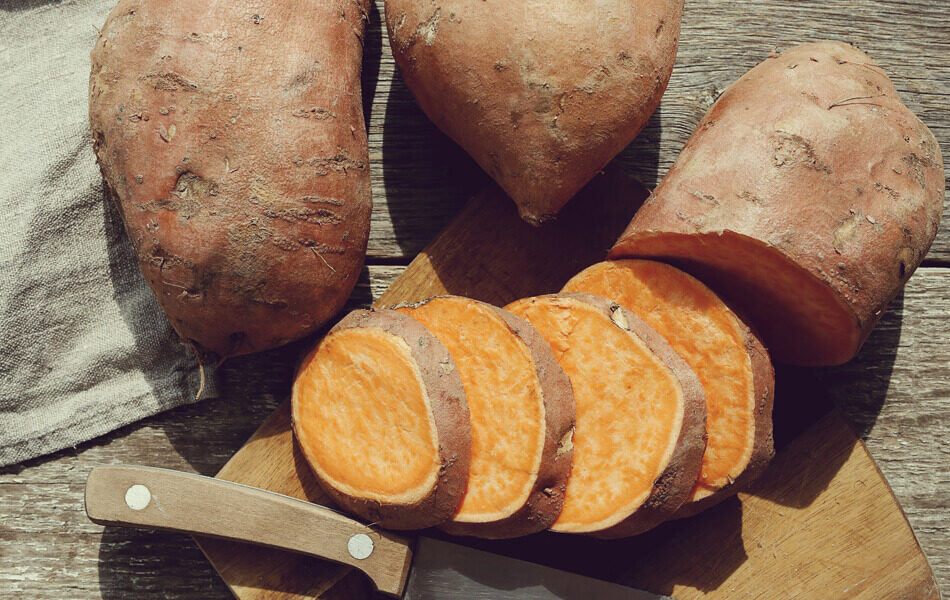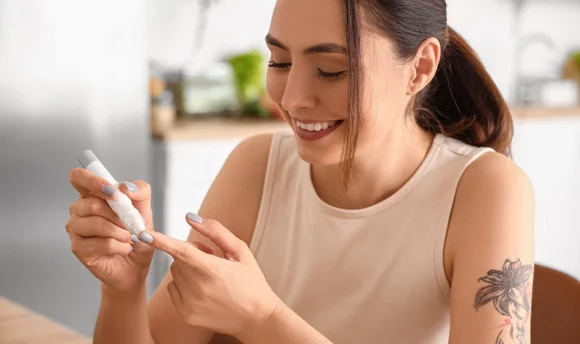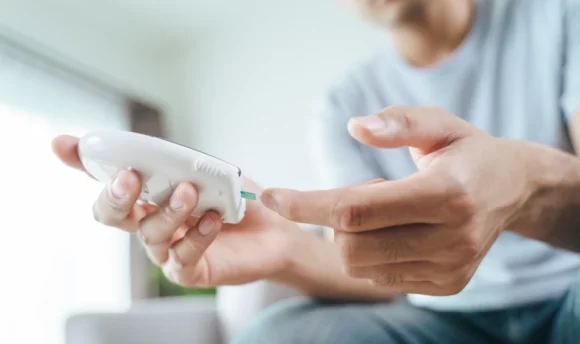Is Potato Good for Diabetes? List of Diabetes-Friendly Potatoes
Potatoes are a staple of the human diet across cultures, but are they good for those with diabetes? We take a look at the different kinds of potatoes that are best for those with diabetes in this article.

Potatoes are tubers grown underground and considered a staple of diets in various cultures. They come in a variety of forms, including potato salad, baked potato, mashed or diced potatoes, and fried potatoes. You can also get sweet potatoes, though they are technically a different kind of vegetable.
As a starchy vegetable, potatoes are sometimes avoided by those with diabetes for their higher glycemic load and carbohydrate content, but are potatoes always bad for diabetes and blood sugar control?
In this article, we’re going to take a look at whether potatoes can be eaten by those with diabetes, whether potatoes raise blood sugar, and which potatoes you should eat if you have diabetes. Keep reading now to learn more.
Is Potato Good for Diabetes?
Potatoes are classed among high GI foods and so may be avoided by those with diabetes, but they do come with many important vitamins, minerals, and nutrients that are necessary for a healthy diet.
Those with diabetes may choose to enjoy potatoes alongside other non-starchy vegetables to even out the glycemic load of their meals and control their blood glucose levels.
As high GI foods, potatoes are likely to cause a spike in blood glucose levels when you eat them. This causes many with diabetes to not eat potatoes.
The reason for this blood sugar spike is the high carbohydrate content in potatoes. Carbs are broken down into blood glucose which triggers the release of insulin into the bloodstream.
Diabetes is a condition in which the body cannot properly regulate blood sugar levels, which means that spikes like these can be dangerous. However, eating potatoes can be safe for people with diabetes when they are combined with other vegetables or eaten in moderation.
People with diabetes are taught to limit their digestible carbohydrate intake to somewhere between 20–50g. This means that if you’re eating potatoes, it needs to be in very limited amounts.
Poorly managed diabetes can lead to a range of other conditions, like cardiovascular disease and stroke. If you choose to eat potatoes, make sure you measure the amount and keep to your limited carbohydrate intake to manage blood sugar levels as best you can.
Do Potatoes Raise Blood Sugar?
Potatoes do raise your blood sugar. They have a high GI, which means when you eat them, they are likely to cause a spike in your blood sugar levels. This is due to their very high carbohydrate content.
High glycemic index foods, such as potato or potato bread, are broken down more quickly than those with lower glycemic loads. The way a food is cooked can alter its GI, and so can the foods it is paired with. Different kinds of potatoes will have different GIs, but they are all considered high.
Potatoes that are paired with fats, acids, protein, and fiber should not cause as severe a spike in blood sugar because all of these food groups will work to lower the overall GI of potatoes. It is also suggested that you eat the skin and boil potatoes if you want them to have a lower GI.
5 Best Potatoes for People With Diabetes
When people with diabetes eat potatoes, there are certain ways to eat them that can be better for their condition. Potatoes come in wide varieties and forms, and below, we have listed 5 of the best potatoes people with diabetes can eat. Take a look to learn more.
#1 Cooled, boiled potatoes
People with diabetes who choose to eat potatoes are often told to boil them. This is because boiling reduces the glycemic load of the potato. You should also allow the potato to cool before you eat it to further lower GI. The GI should remain lower even if you reheat the potato.
Minimal processing in this kind of potato helps keep blood sugar levels lower.
Glycemic index
The GI of a boiled potato is around 82. While this in no way makes it one of the low GI foods, it is still a lower GI than other kinds of potatoes, like mashed potatoes. This makes this kind of potato better for managing diabetes.
Sugar content
Boiled potatoes have about 0.91g of sugar and 20.1g of carbohydrates per 100g. This is still a relatively high carbohydrate content, and boiled potatoes should be eaten in moderation by those with diabetes.
Is it good for type 2 diabetes?
While boiled potatoes are probably the best option for those with diabetes when it comes to these starchy vegetables, they are still considered a high GI food and should be eaten in moderation and alongside low and medium GI foods.
Boiled potatoes come with more health benefits than other kinds of potatoes. This is because they are boiled, unprocessed, and maintain a relatively low calorie and fat content. They also contain lots of minerals, including vitamin C, magnesium, and potassium.
#2 Potato salad
Potato salad is sometimes recommended to those with diabetes as a way of consuming potatoes safely. Like with other kinds of potatoes, they should not be consumed in excess, and you should not exceed your daily carbohydrate limit.
Glycemic index
Potato salads have a much lower GI of around 45, which would put them in the range of other low GI foods. This is because the fat and other ingredients within the dish bring the glycemic index down.
Sugar content
Homemade potato salads have a carbohydrate content of around 11.2g. It is important when making your own potato salad to avoid mayonnaise or sour cream with lots of added sugar. Instead, look out for diabetes-friendly ingredients that will help lower the glycemic index of the dish.
Is it good for type 2 diabetes?
Potato salads are a good option for those with type 2 diabetes as it has a much lower glycemic index than other kinds of potatoes. It also mixes potatoes with other ingredients that may offer health benefits that potatoes do not.
It is important to avoid ingredients, like mayonnaise and sour cream, with lots of added sugars when making your own.
This potato dish may be better for those with diabetes as it keeps the potatoes in small chunks. Other kinds of potatoes, like mashed potatoes, are thought to be worse for diabetes because of the way they are processed.
#3 Waxy potatoes
Waxy potatoes include new potatoes, red potatoes, and purple potatoes. They have a much lower starch content than other kinds of potatoes and are more suited to boiling, roasting, and adding to casseroles.
Glycemic index
The GI of new potatoes has been measured at around 65. This makes them a little lower than other kinds of potatoes and, therefore, better for blood sugar management.
Sugar content
The carbohydrate content of new potatoes is 9.84g per 100g. This makes them much lower in carbohydrates than other kinds of potatoes. Though they have a lower carb content, they should still be consumed in moderation by those with diabetes.
Is it good for type 2 diabetes?
New potatoes, and other waxy potatoes, have a lower starch content than other kinds of potatoes. This makes them possibly better for those who have diabetes. Waxy potatoes can be boiled, roasted, and added into casseroles and will hold their shape better than starchy potatoes.
#4 Baked potatoes with skin on
Potato skins hold lots of healthy nutrients, minerals, and polyphenols, which make potatoes a healthy addition to your diet. Also, keeping the skin on potatoes can lower their GI.
Glycemic Index
The GI of baked potatoes is estimated to be around 85 for a 150g baked potato. This is a high GI but could be brought down by pairing your potato with other vegetables and ingredients.
Sugar content
The sugar content is about 1.4g per 100g, and the carbohydrate content is 46.1g. This makes baking potatoes high-carb.
Is it good for type 2 diabetes?
Baking potatoes may be a better option for those with diabetes, provided it is paired with other vegetables and ingredients that bring down the GI. It should not be eaten to excess as it has a high GI and carb content.
#5 Sweet potatoes
Sweet potato is one of the best options for those with diabetes to consume. Sweet potatoes have a lower carb content than other potatoes but have higher sugar content. This means that, like other potatoes, sweet potatoes should still be consumed in moderation by those with diabetes.
Glycemic index
The GI of sweet potatoes is around 94. This makes them a high GI food and is similar to the GI of some kinds of potatoes.
Sugar content
Sweet potatoes do have a higher sugar content than potatoes, coming in at around 5.74g per 100g. The carb content, however, is much lower than regular potatoes, with just 17.7g per 100g.
Is it good for type 2 diabetes?
Sweet potatoes may be a good choice for those with type 2 diabetes as they have a lower carbohydrate content than regular potatoes. This helps you stay under your carb limit each day.
Sweet potatoes do, however, have more sugar than regular potatoes and a relatively high GI. This means they should always be consumed in moderation.
FAQs
While potatoes have a higher carbohydrate content than rice, it is still recommended that those with diabetes eat potatoes over white rice.
People with diabetes can eat oven-baked potatoes. Those with diabetes can eat many kinds of potatoes, provided that they remain under their daily carbohydrate limit and pair them with foods that bring down the overall GI of the meal.
Potatoes do have a high GI and are classed among other high GI foods. The GI refers to the rate at which the food is broken down into blood glucose after consumption. Cooking methods and other foods in the meal can alter the GI of a dish.
Potato chips will raise blood sugar levels because they have a high carb content and GI value. Potato chips also have a high fat and salt content and should be avoided for a healthy and balanced diet.
Potatoes can be substituted with whole grains like quinoa and brown rice. These grains will not spike blood glucose levels the way potatoes will and are healthier for your overall diet.
A Word From Our RD
Potatoes come with many health benefits, including nutrients like vitamin C and potassium, polyphenols, and fiber. They do, however, have a very high carbohydrate value. This makes them a high GI food that may not be suitable for those with diabetes.
Diabetes is a condition that means the body cannot regulate blood sugar properly.
Those with the condition tend to have to eat carbohydrates at a reduced rate and should monitor blood sugar levels. This could mean limiting high GI foods like potatoes and white rice.
Potatoes have a relatively high GI (glycemic index). This means that the carbohydrates in potatoes are broken down quickly and turned into blood glucose, causing a spike in blood sugar levels.
Everything from the kind of potato to the way it is cooked to the vegetables it is paired with can alter the GI of a potato, but higher GI foods should still be limited by those with diabetes.
To consume potatoes when you have diabetes, you should eat more boiled potatoes, consume the skin, and let the potatoes cool after cooking.
You should also pair them with fats, acids, and protein, like chicken and beef, and other non-starchy vegetables. Always consume high-carb, high-GI foods in moderation when you have diabetes.
Conclusion
Potatoes have a high GI and carb content, which means they need to be consumed in moderation by those with diabetes. Potatoes that are boiled and served with the skin on may be more suitable if you have diabetes.
Good substitutes for potatoes include whole grains, like quinoa, bulgur, and brown rice. You could also try pairing potatoes with lots of low GI foods to bring down the GI of your meal.
Always consume carbohydrates in moderation and keep track of your blood sugar levels to properly maintain them if you have diabetes.

















































 Select your language:
Select your language: 








